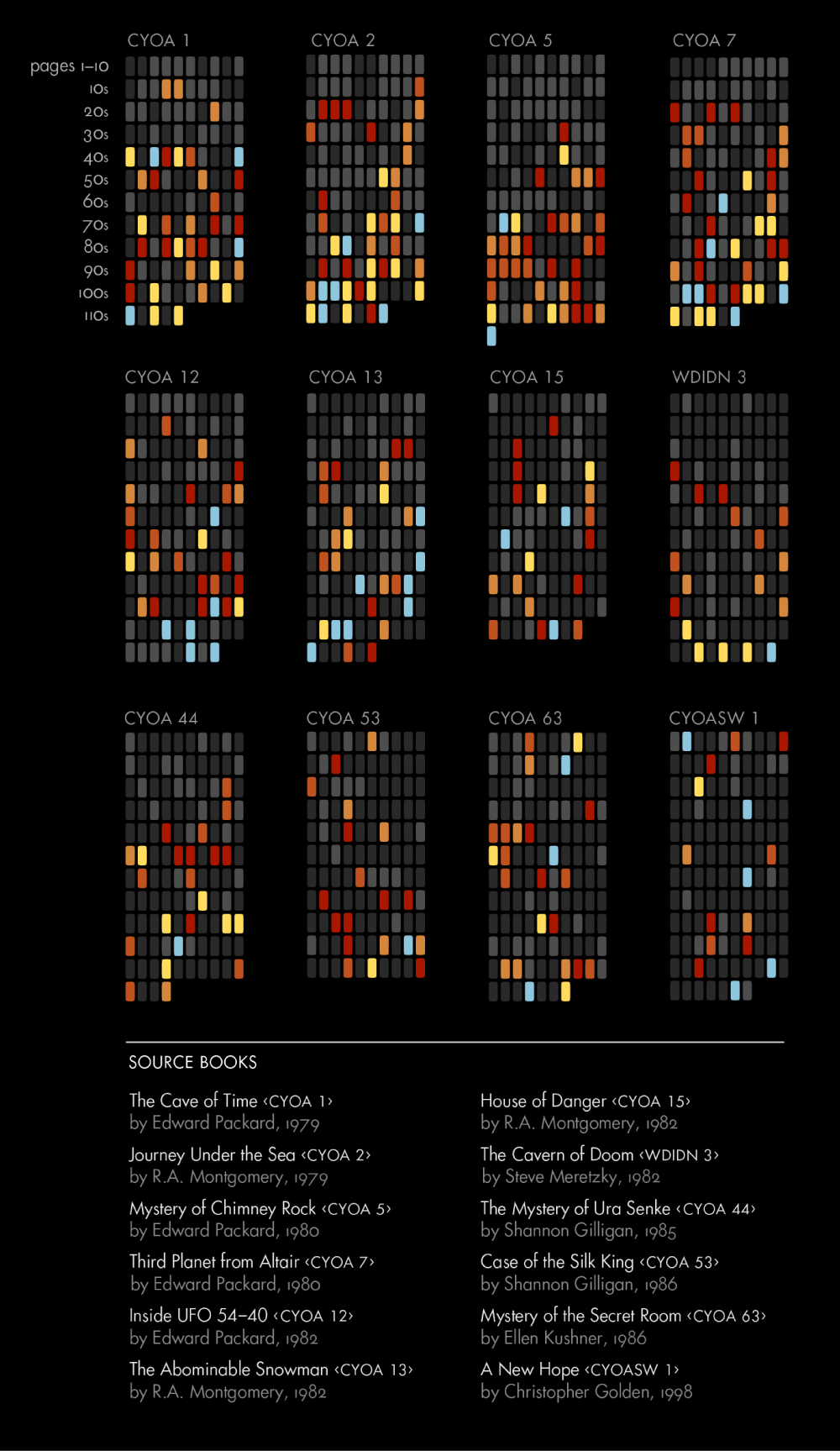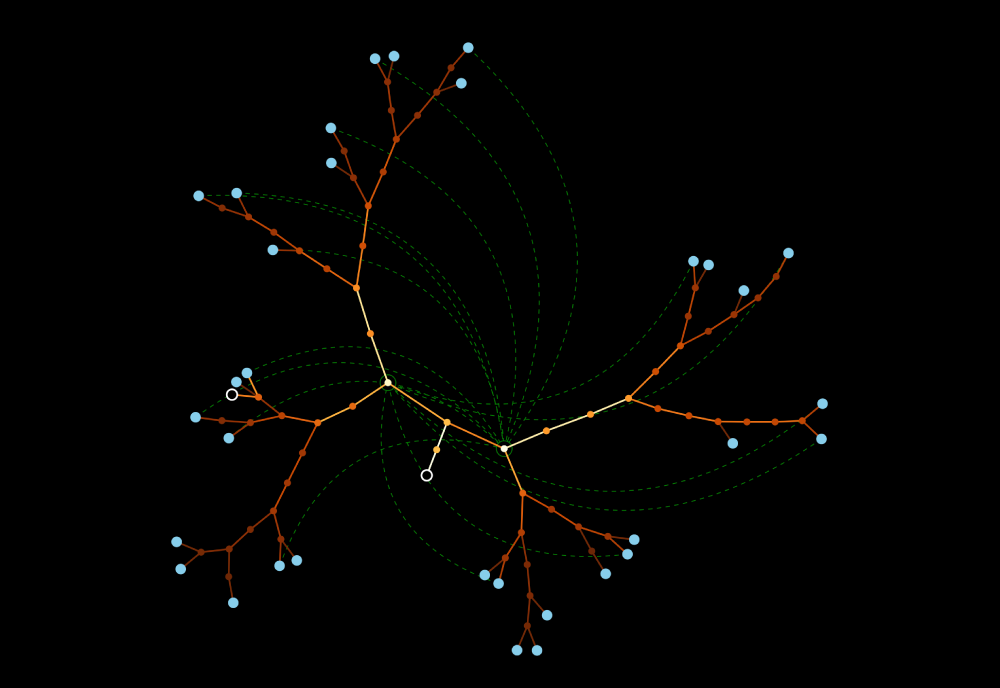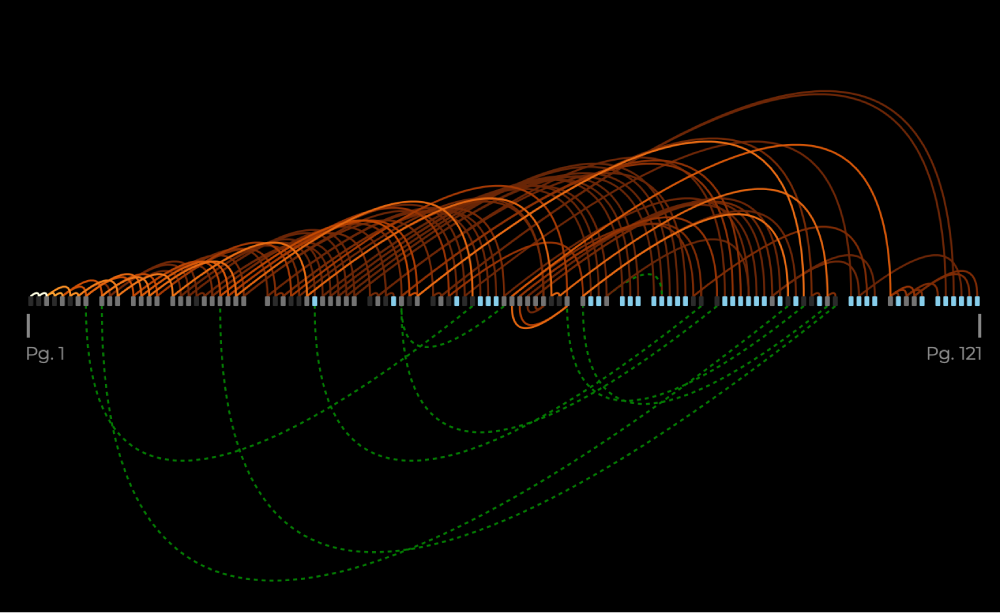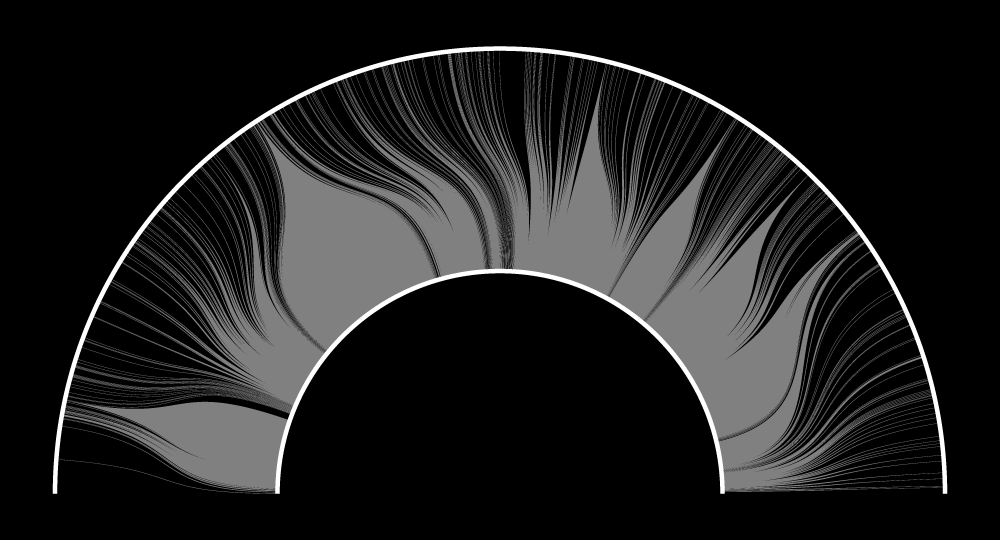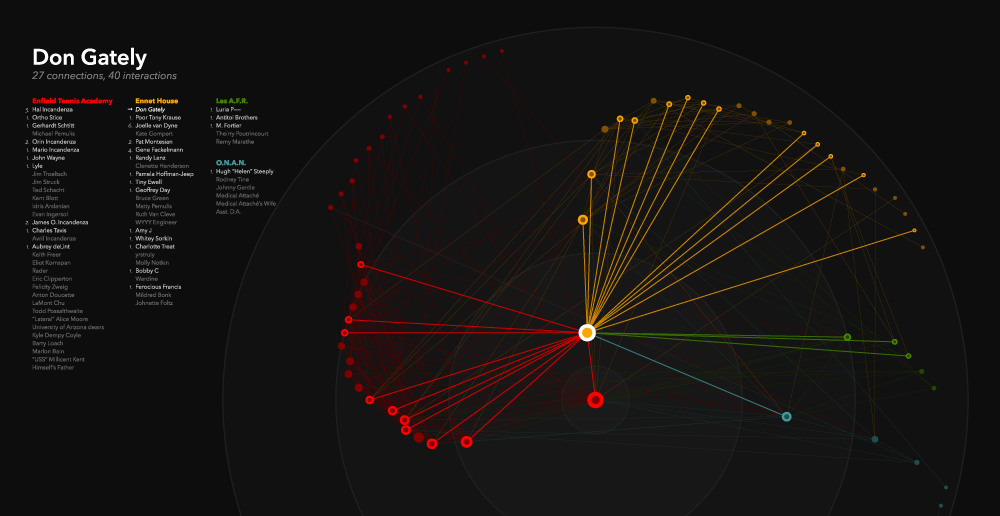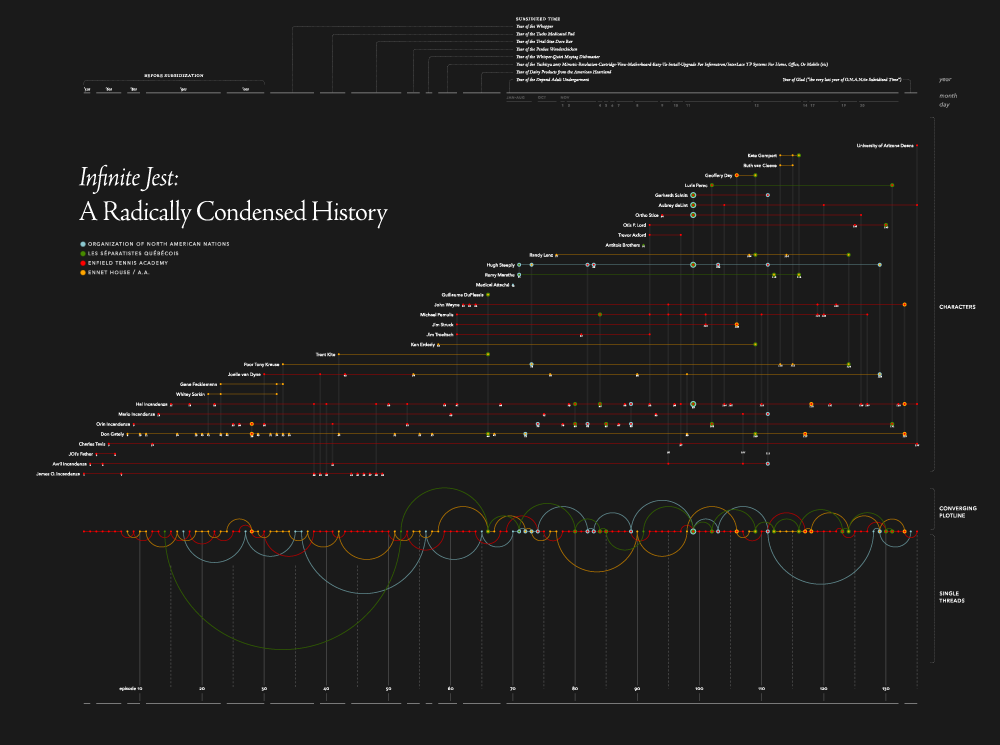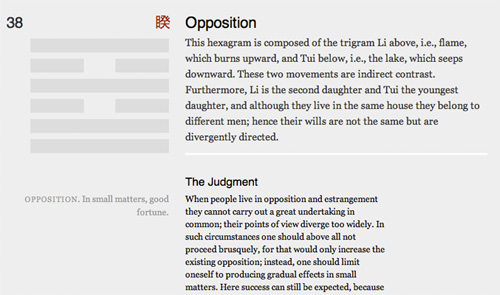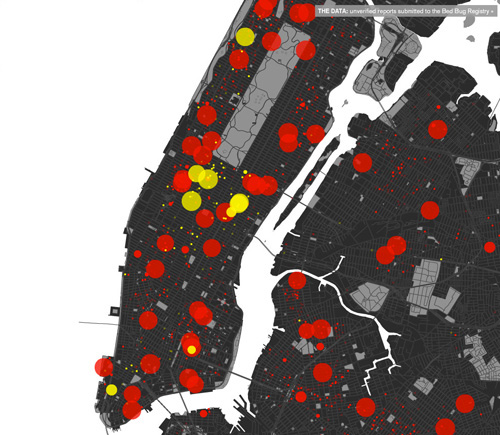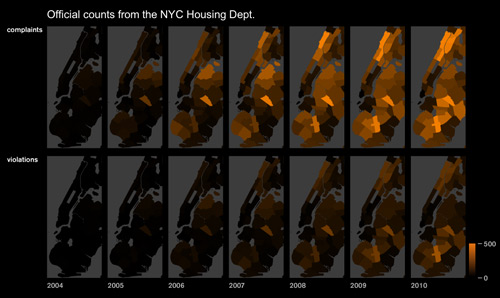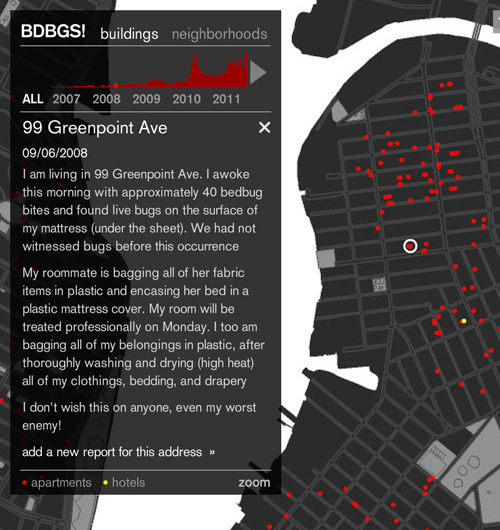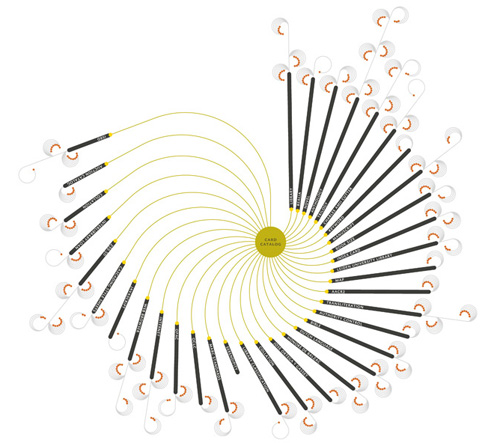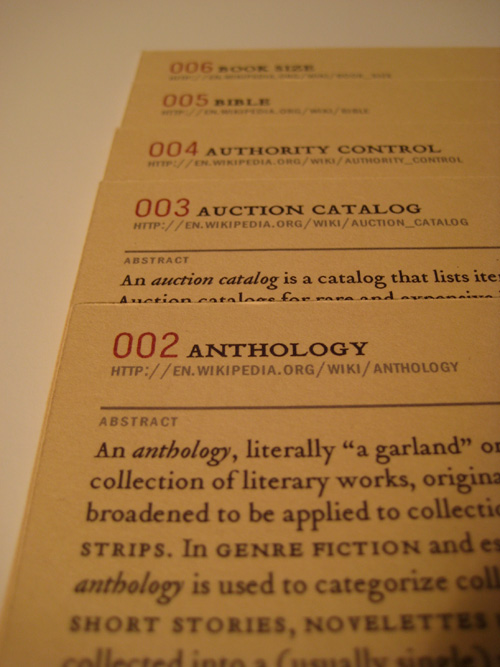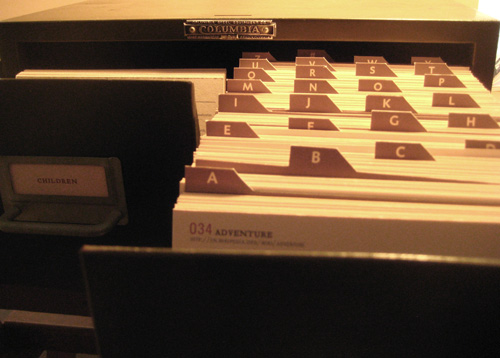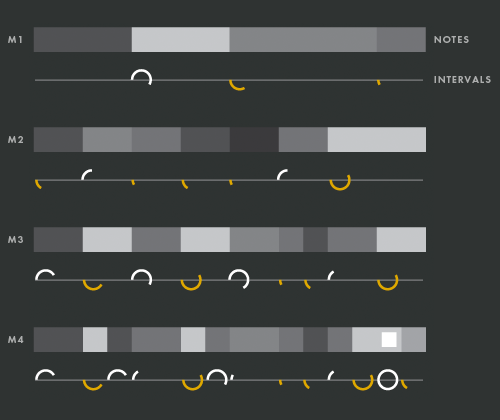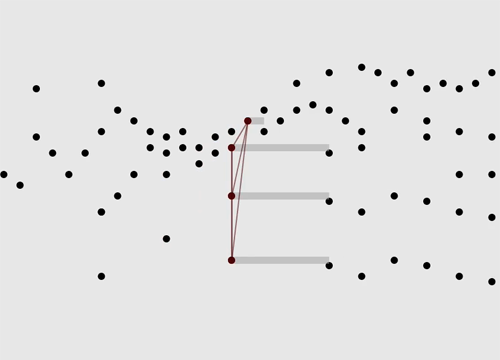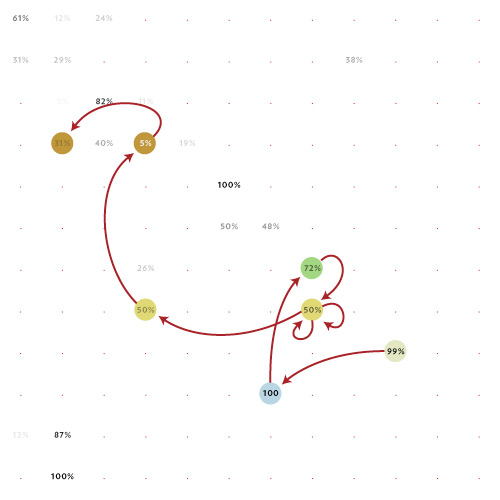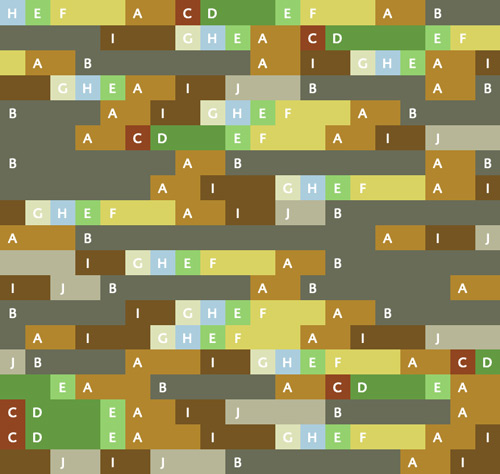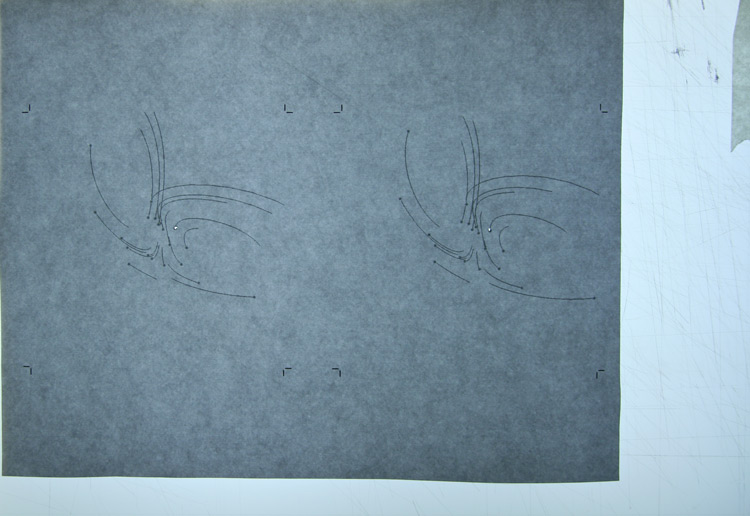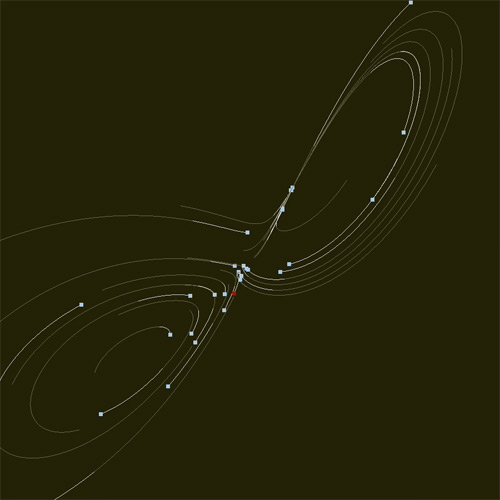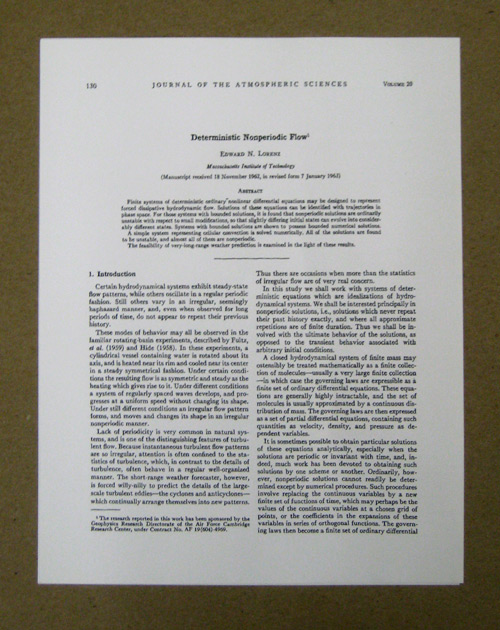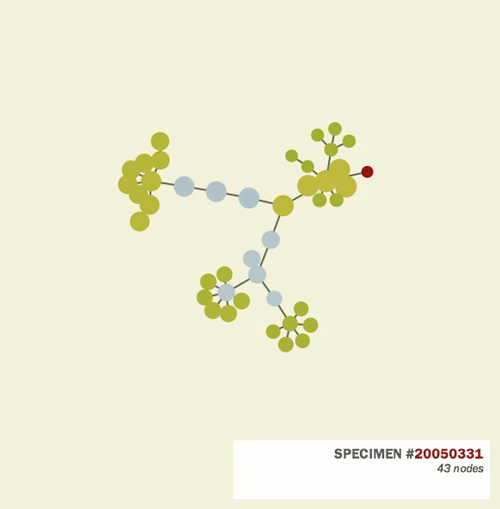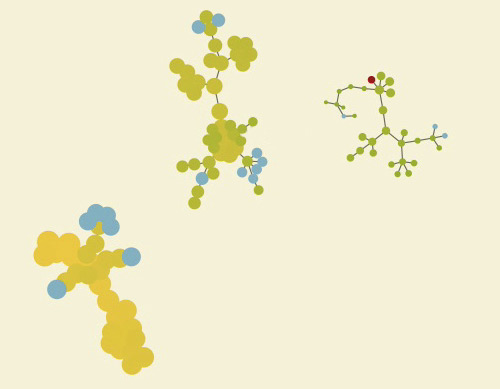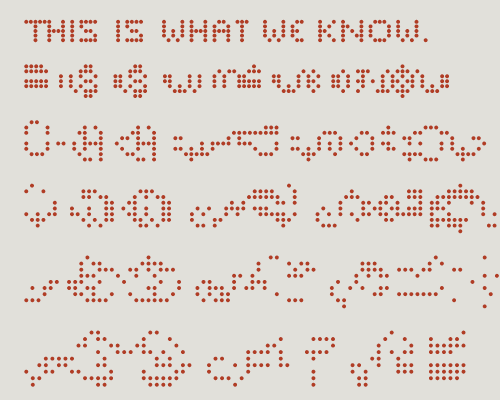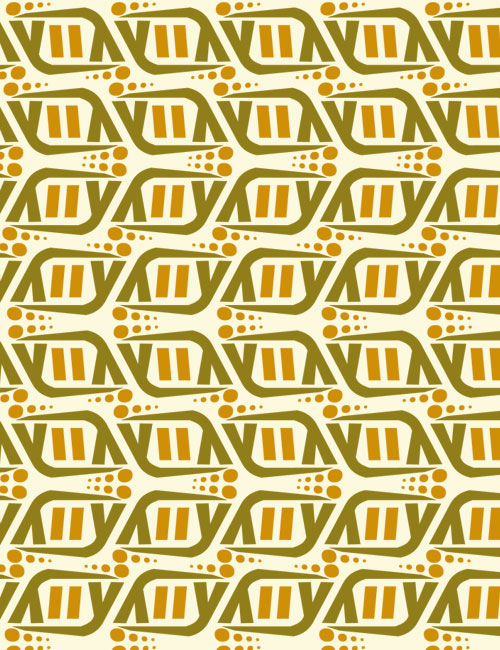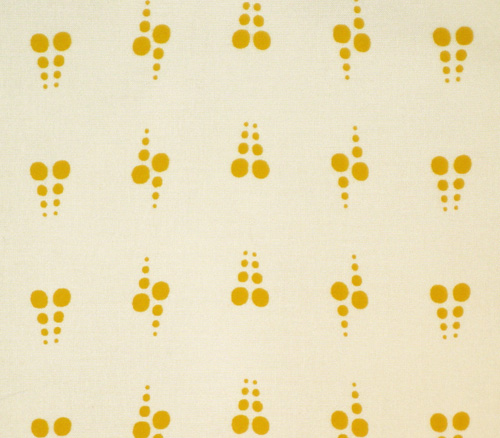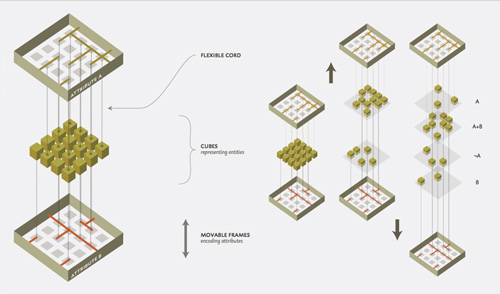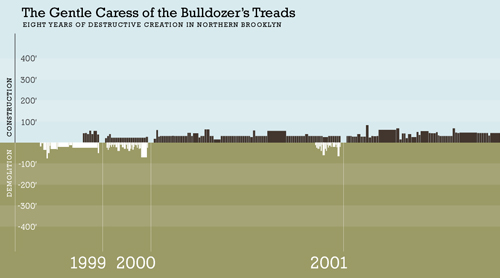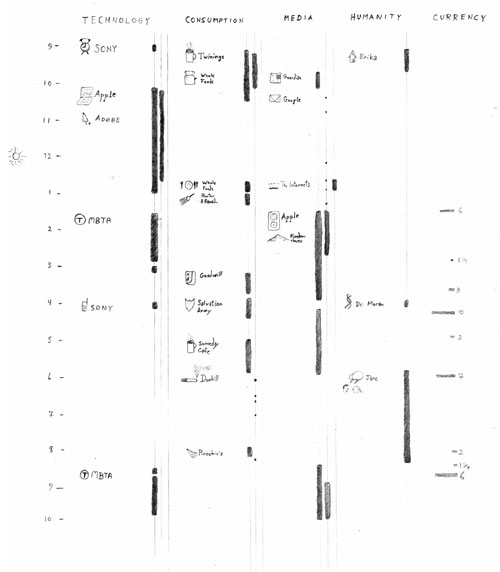self-initiatedOne Book, Many Readings/Nostalgia and finite state machines
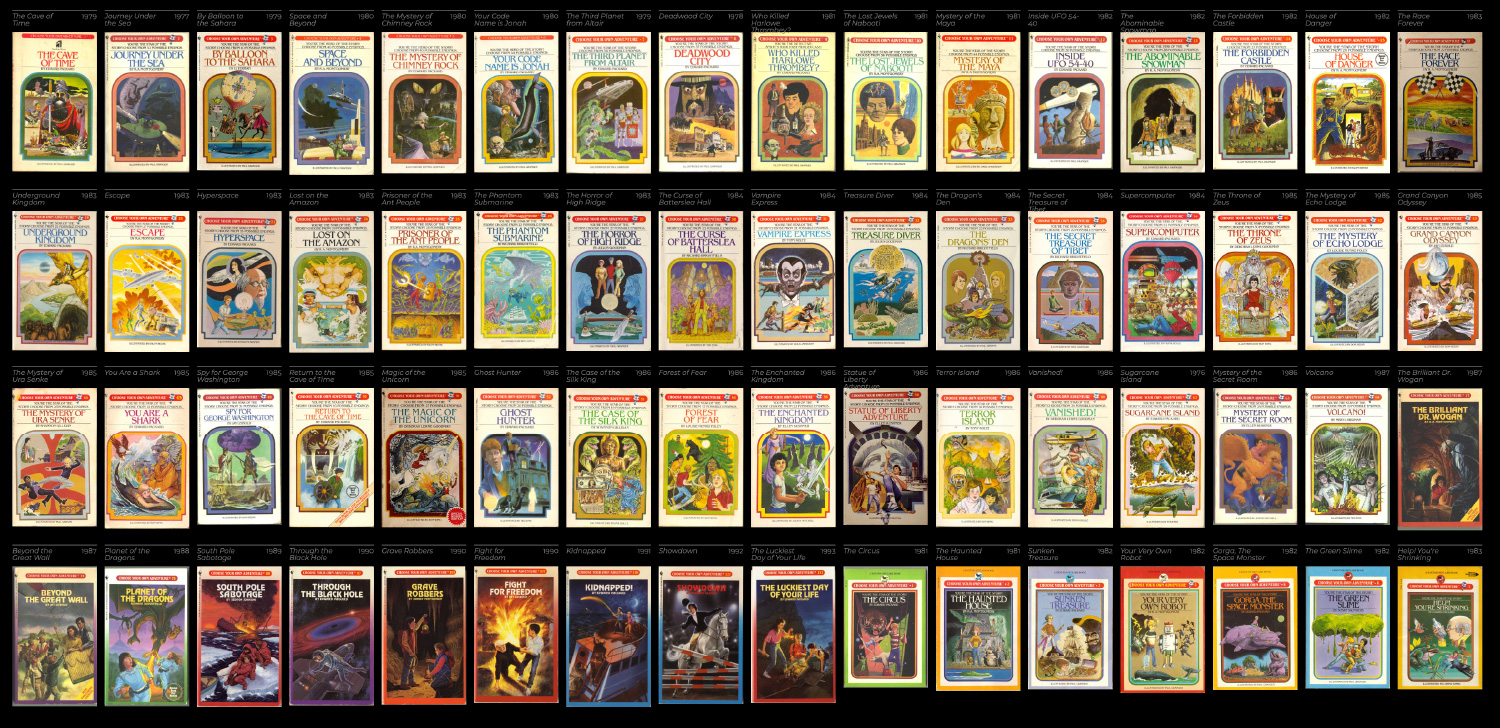
| website | samizdat.co/cyoa |
| year | 2009 / 2022 |
As a child I whiled away countless hours lost in Choose Your Own Adventure books. At the time they just felt different from the other books I’d read. In retrospect it’s clear that the difference was that these were an early form of what we’d now call ‘interactive’ entertainment; albeit embodied in technology that had been around since Gutenberg. This project examines the choices made by those trying to build this kind of proto-game while having only pages, ink, and cross references to work with.
self-initiatedInfinite Digest/a radically condensed history
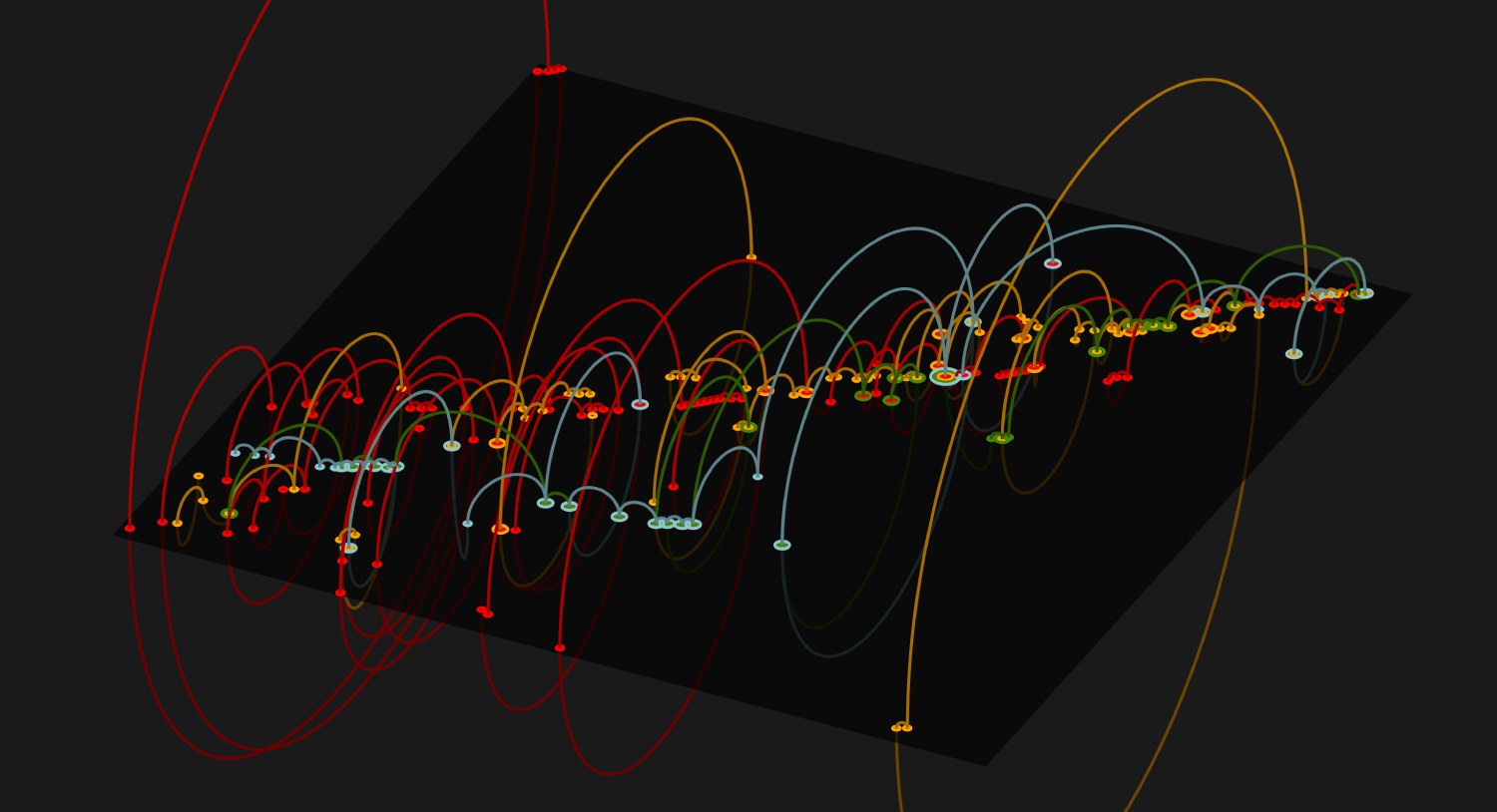
| website | samizdat.co/projects |
| year | 2021 |
I first read David Foster Wallace’s mammoth novel, Infinite Jest, as a grad student during my time living in Somerville, Massachusetts. It was hard not to be dazzled by the surface-level details, particularly the exquisite language and a bracingly parodic view of American culture that felt like a periscope pointed at the 21st century four years ahead of time. But even in that initial reading, it was clear that something deeper was at work in terms of its structure and the way it used the form of the book as part of the experience.
self-initiatedAsk the Oracle/introspection enabler

| website | oracle.samizdat.co |
| year | 2011 |
I’ve never been a fan of horoscopes or other forms of divination that provide concrete predictions of the future. However, the use of the I Ching for similar purposes has always intrigued me. By formulating a question and then reading a random chapter (selected by flipping coins or counting yarrow stalks), one’s concerns are ‘answered’, but not in the form of a “you will find love” reassurance. Instead the chapters describe universal situations of conflict into which one can project the current worries and consider the parallels.
self-inflictedBDBGS!/The plague this time
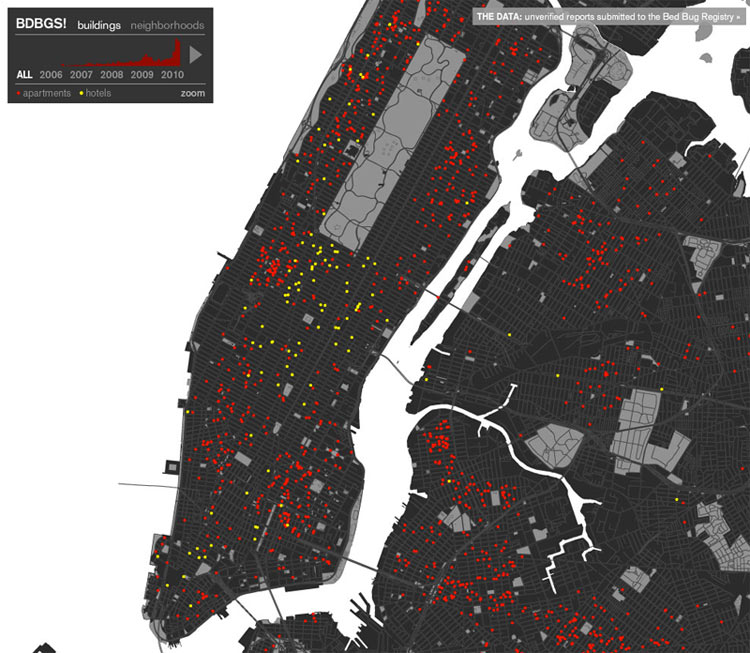
| website | samizdat.co/bdbgs |
| year | 2010 |
I heard my first horror story about dealing with bedbugs from an acquaintance in Park Slope in 2008. By 2010 I knew closer to a dozen. When they finally came for me I began to wonder exactly how prevalent these pests are in New York (and whether the growth was as explosive as it seemed).
r.i.s.d.Wikipedia Card Catalog/Bits and atoms changing places

| booklet | see-also.pdf |
| year | 2006 |
As someone who grew up when libraries were still the densest collections of knowledge available, Wikipedia fills me with both wonder and frisson over what has been gained and lost in the transition to our virtual-everything world. Its digital nature means that the ‘UI’ of the library bookshelf goes out the window. There was a power in being able to see the size of various sections simply by looking at the thickness of a spine. And the serendipitous discovery of related topics through proximity (due to the Dewey or LoC ordering scheme) made for a wondrous form of exploration. I created a card catalog centered on a single entry on wikipedia and expanded out to the documents it linked to. I began with the entry for Card Catalog, following its thrity-some links and creating cards for these child nodes. The second generation expanded even further, yielding nearly four hundred grandchildren to the original article. The children and grandchildren sit side-by-side in the paired drawers of an old cabinet giving a physical read on the rate of expansion in the highly connected network of articles in the database.
self-initiatedTypography of Neglect/catalog and classify

| website | samizdat.co/neglect |
| year | 2004–2009 |
In 2004 I began what I expected to be a short-lived photography project looking at old signage. To my surprise, this game of hide-and-seek with unique lettering became something of a habit, and since then I’ve been snapshotting my way through every new place I visit. The site collects the first six years of images documenting some thirteen cities, seven countries, and nearly three hundred signs.
r.i.s.d.Fuguestate/Decompiling J.S. Bach
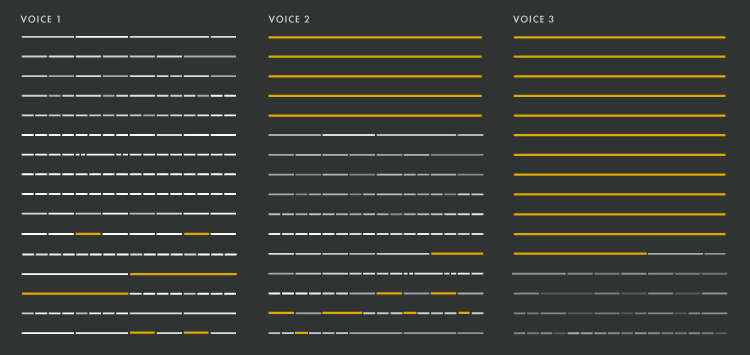
| booklet | music-theory.pdf |
| midi | bwv-578.mid |
| year | 2007 |
Despite my relative hopelessness when confronted with a musical instrument, I’ve been fascinated by music theory since middle school. The geometric relationships between tones, intervals, and the structure of waves made analytical sense to me, even if it didn’t seem to apply very readily to 13 Songs or Loveless. In college I was blindsided by J.S. Bach whose work perfectly embodies this ‘music is math’ approach to composition. His fugues are both beautiful and dauntingly complex as they layer motif upon motif, building up to emergent juxtapositions you would never predict from the melody line alone. These sketches examine BWV 578: The ‘Little’ Fugue.
u.c.s.f.Echolalia/Talking to finches

| applet | samizdat.co/projects |
| year | 2006 |
Birdsong is a popular research topic in neuroscience, primarily because it tells us so much about how human brains deal with language. In collaboration with colleagues at the UCSF Keck Center, I created visualizations of the syntax networks seen in the zebra finch. The data broke a bird’s song down into a finite alphabet of syllables sequenced over time. We could then examine the probability that e.g., syllable D would be followed by C vs by E. The diagram above shows the relative likelihoods of different syllable-to-syllable transitions seen in a particular finch’s song.
r.i.s.d.Do While/Stop motion screensaver
| citation | lorenz-1963.pdf |
| year | 2007 |
In 1962 Edward Lorenz wrote a paper which more or less created the offshoot of physics variously labeled dynamical systems or chaos theory. Though his subject of inquiry was the sort of convection patterns seen in weather systems (and lava lamps), his conclusions took on a metaphorical life of their own. The paper lives on today primarily for its system of three equations representing fairly abstract fluid dynamics qualities. But given that there were three, he had the insight to map them onto the x, y, and z axes and graph the resulting trajectories in order to understand the dynamics of the system. Particularly interesting to me is their approach involved a computer in running the simulation, but created visualizations of its numerical output with paper and pen. In that same spirit I created a stop-motion video consisting of individual frames of the animation printed on paper then photographed on a light table. Note the hole poked through each sheet for the ‘main’ point in the simulation.
r.i.s.d.Leafnode/Markup botany

| website | samizdat.co/projects |
| year | 2007 |
Every web page (including this one) is made up of HTML tags. These tags are nested inside of each other like russian dolls with parent tags containing child tags, grandchild tags, etc. This structure is colloquially called the ‘DOM tree’ by web developers. These animations take the tree suggestion literally and plot the edits over time to one HTML page in terms of branches growing, flowering, and being discarded.
r.i.s.d.Fecundity/Wheat, maggots, and cellular automata
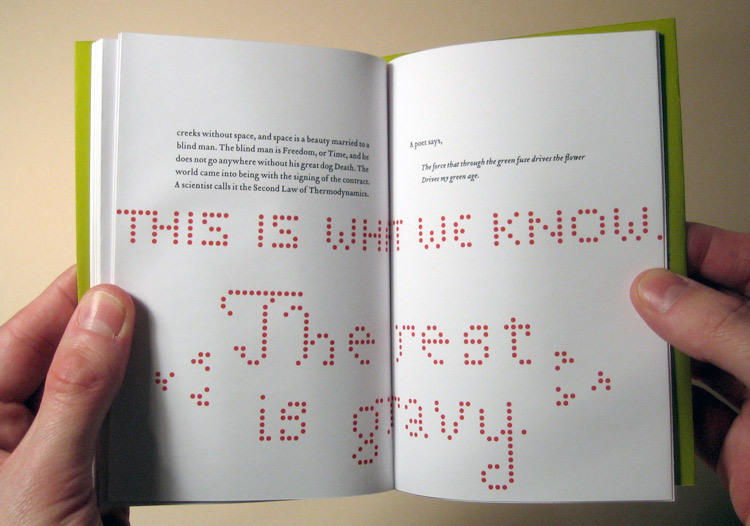
| animation | samizdat.co/projects |
| book | fecundity.pdf |
| year | 2006 |
In 1973 Annie Dillard wrote an essay for The Atlantic called The Force that Drives the Flower. In it she explores the strangeness of our relationship to the natural world; a world that our animal natures should make us intimately comfortable with, yet modern life has left us with a profound alienation toward. There is the difference between flora and fauna, most notably our differing reaction to viewing a field with a million blades of grass versus seeing a similar number of cockroaches. But ultimately our lack of understanding comes down to the imposition of our human consciousness (and synthetic concepts such as morality and justice) onto the workings of an uncaring, deterministic system, filling us with dread. Her ultimate message of hope is wry and requires a leap of optimism to embrace: “The scientist calls it the Second Law of Thermodynamics. This is what we know, the rest is gravy.” And indeed this is about the best comfort, albeit cold, that the natural world has to offer: that along the way to the inevitable there will be moments of joy and beauty. And we can savor them all the more since the only guarantee is that they will be rare and transient.
r.i.s.d.Textiles/Punchcard patterns
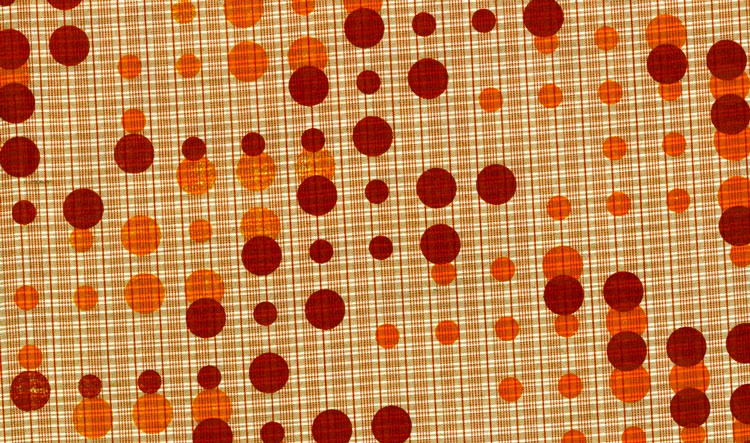
| year | 2005 |
I’ve always been a sucker for repeating patterns and am known to dabble in surface design. Above is a pattern composed of (little-endian) binary representations of the numbers one through seventeen. Zeros are small dots and ones are large.
r.i.s.d.Posters/Making print
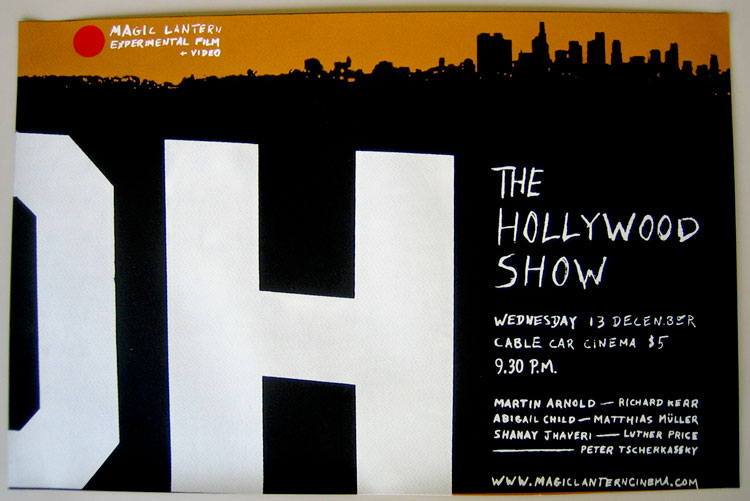
| year | 2005–2008 |
A silkscreened poster for a showing of the Magic Lantern experimental film series in Providence, R.I… Made by hand in an edition of 100; printed in 3 colors on bright orange paper.

